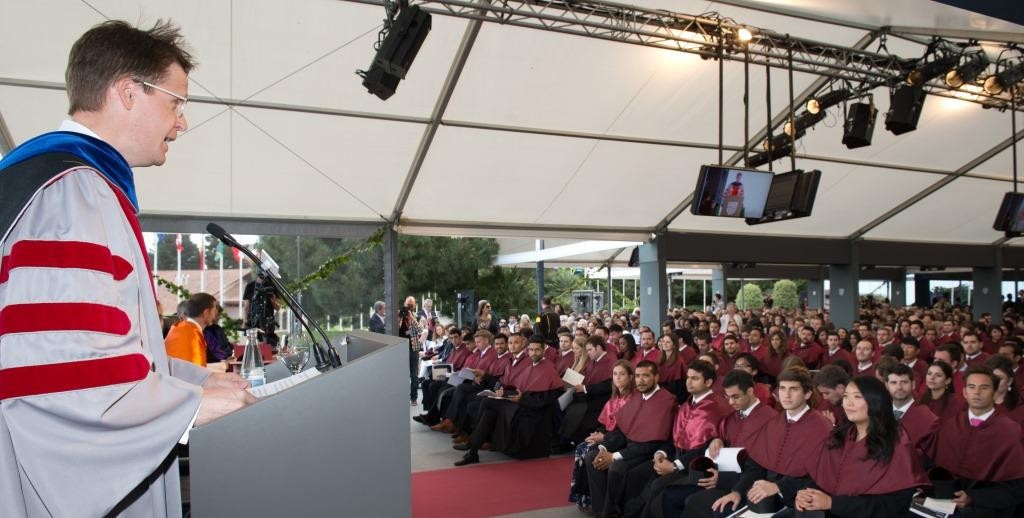Now that the year is winding down, let’s look back at how the MBA Program has been doing in the rankings in 2015.
Rankings take a very peculiar and necessarily non-exhaustive view at a program. And they are all different. That’s why a look at all of the relevant ones together makes sense and helps us take each result individually with a grain of salt.
The Financial Times, The Economist, Business Week and Forbes publish the main rankings for MBA programs. Poets&Quants publishes its own ranking which is a composite of the four rankings mentioned before.
Our MBA has been doing well in those rankings this year, with the exception of The Economist. I offer a quick summary of what each ranking measures and how we have been doing. The rankings are quite different in the cohorts from whom it collects data and the weight it gives to the different aspects of the program.
Financial Times
The FT ranking comes out in January and collects data from graduates that finished three years before, i.e. 2011 in the last edition. It is putting a lot of weight on the level of salaries, the increase in salaries and the research record of the school – together more than 50%.
The IESE MBA came in 7th, same as the last two years. The top 10 schools come from the US (7) and Europe (3).
The Economist
The Economist’s ranking comes out in October and collects data from the graduating class of the same year, i.e. 2015. The emphasis of the ranking is on career opportunities and Personal Development – together 70%. The IESE MBA came in 14th this year, from the 5th spot last year. The reasons were a slightly lower rank in career opportunities – 91% of the class had received an offer within 3 months from 96% the year before and the salaries, although overall higher than last year, had a higher percentage of variable pay and in The Economist the fixed salary counts. The ratings from the graduates were as good as last year’s so that the descend seems more associated with other schools’ ratings going up.
Business Week
The Business Week ranking has been around longest. It is published in October and started in 1988. BW collects data from the graduates of the last year, i.e. 2015; blends it with data from the graduates of 2014, surveys alumni from 2007, 2008 and 2009; and asks recruiters about their experience in 2013-2014. Most of the weight is on the recruiter and alumni survey, 65% total.
This year, our MBA came in 7th among the “international” MBAs – which is shorthand for non-US programs. Last year we were 8th.
Forbes
The Forbes ranking is the simplest of all. It is published in September. It measures the earnings of our graduates from five years ago (2010) and compares it to the cost of doing the program, including opportunity costs.
The IESE MBA came in 2nd for non-US 2-year programs, from 5th place in 2013 (the ranking is published every other year).
Poets&Quants
The Poets&Quants website has been publishing rankings and reports on MBA programs for a few years now. The editor, John Byrne, was a member of the Business Week team that started business school rankings.
The P&Q ranking combines the four rankings I described above, giving 30% weight to the FT and Forbes and 20% to The Economist and Business Week. In this combination, the IESE MBA comes in on 3rd place of the non-US MBAs, up from 5th place a year ago.
Maybe the P&Q ranking, as a summary ranking, describes best that overall the year has been good for our MBA in the rankings. Let’s hope that this continues next year.
A last word on the FT European ranking that came out this week (December 7th, 2015):
Each year in December, the Financial Times publishes a summary ranking for European schools. It combines the results of four different rankings published during the year: MBA, Executive MBA (EMBA), Masters in Management (MiM) and Executive Education. So there is no new data, it’s a summary. We’ve come out in 8th place this year. Now you may ask, why we’re 8th when we have the 3rd spot for MBA, 8th for the EMBA, 1st for Open Executive Education and 5th for Custom Executive Education? The answer is that we don’t have an MiM program. When a school doesn’t have a program, the FT gives it a zero score, which is equivalent of being at the bottom of the table for the corresponding program. I guess you can tell that I believe that there are better ways of finding the top European business school…
Which brings me to the next point. The FT publishes this summary only for European schools. Why this is the case is anybody’s guess: Many very good American schools have no EMBA, no MiM (HBS, for example). It would take a lot of explanation if people were to see the complete ranking.









